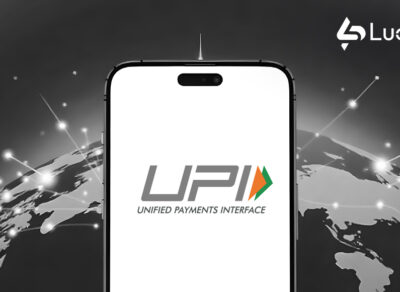UPI: The Hero of India’s Digital Payment Revolution

India’s digital transformation has witnessed several breakthroughs, but perhaps none more impactful than the Unified Payments Interface (UPI). Launched in 2016 by the National Payments Corporation of India (NPCI) under the guidance of the Reserve Bank of India, UPI has evolved from a simple digital payment system to a financial phenomenon, seamlessly integrating digital transactions into the daily lives of millions. In just a few years, UPI has become the bedrock of India’s digital payment ecosystem, quietly reshaping how people handle money—from paying household bills to enabling small businesses to thrive in a cashless economy. But UPI is much more than a transaction tool; it’s a technological marvel that symbolizes India’s digital ambition.
The Rise of UPI: Bridging the Digital Divide
UPI’s journey began with a bold vision: to make financial transactions as effortless and accessible as sending a message. With smartphones becoming more widespread and internet penetration on the rise, UPI capitalized on the perfect moment to redefine digital payments.
Through its user-friendly app-based interface, UPI enabled anyone with a smartphone and a bank account to make instant payments, removing the hassle of entering bank details or carrying cash. The technology allowed interoperability across various banks, meaning that customers could transfer funds seamlessly without being tied to a single banking app.
A key to UPI’s success was its simplicity. Unlike other systems that often required a learning curve, UPI was intuitive. It allowed for money transfers using just a Virtual Payment Address (VPA), making it accessible even to users unfamiliar with traditional banking procedures.
Transforming Transactions: UPI’s Impact on Daily Life
UPI’s adoption quickly skyrocketed as it became the preferred mode of payment for both small and large transactions. Whether splitting a restaurant bill with friends, paying for groceries, or settling utility bills, UPI streamlined every type of transaction imaginable. Here’s how it changed the game for different facets of society:
- For Consumers: UPI provided convenience, security, and speed. Transactions that once required multiple steps or visits to a bank could now be completed within seconds. Its two-factor authentication added a layer of security, and with no extra fees for transfers, UPI emerged as a clear winner over debit cards and mobile wallets.
- For Small Businesses: Street vendors, local shops, and small businesses embraced UPI as it required no investment in point-of-sale devices. QR codes became ubiquitous, allowing even small vendors to go cashless. UPI helped these businesses reach a broader customer base, empowered them to handle transactions with ease, and reduced the risk associated with cash handling.
- For the Government: UPI has been an effective tool in promoting digital literacy and formalizing the economy. The government, in turn, has facilitated UPI’s growth through the “Digital India” initiative, encouraging its adoption at every level. By reducing dependency on cash, UPI has supported the shift towards a cashless economy, improving transparency and reducing black money circulation.
Beyond Payments: UPI’s Broader Influence on India’s Economy
While it began as a payments tool, UPI has evolved into a multi-functional platform that supports bill payments, recurring payments, and even digital lending. The rise of UPI has led to:
- Financial Inclusion: UPI has brought millions of Indians into the formal financial system. With micro-loans and credit scoring models that assess a user’s transaction history, financial services are now accessible to many who previously had no banking access. UPI’s reach into rural areas has made it a powerful agent for financial inclusion, democratizing access to financial tools.
- Stimulating Digital Entrepreneurship: UPI has empowered a new wave of digital entrepreneurs who use digital transactions as their primary business model. For instance, food delivery apps, e-commerce websites, and even traditional businesses benefit from UPI’s ease of use and low transaction costs.
- Supporting Digital Lending: UPI allows financial institutions to analyze transaction data, aiding in the risk assessment of microloans and credit. As a result, lending decisions have become faster, and financial services are more widely accessible.
- Boosting E-commerce: UPI has also facilitated seamless integration with online shopping portals, simplifying the checkout process. Payment systems embedded in e-commerce apps leverage UPI’s real-time processing capabilities, contributing to higher sales and customer retention rates.
How UPI Stands Apart from Other Digital Payment Systems
When compared to other digital payment methods, UPI’s unique model has given it a competitive edge. Here’s what sets it apart:
- Interoperability: UPI’s interoperability allows it to work across all banks and third-party payment apps, unlike other digital wallets which often require both users to be on the same platform. This versatility has made UPI universally accessible, fostering widespread adoption.
- Real-time Settlement: UPI ensures instant money transfer, allowing funds to be received immediately. Unlike NEFT or IMPS, which can take varying amounts of time, UPI offers round-the-clock real-time payment settlements.
- Security and Fraud Prevention: Security is embedded in UPI’s design with two-factor authentication, which involves a UPI PIN and the user’s mobile number for each transaction. Additionally, its transaction limits add an extra layer of fraud protection.
- No Transaction Fees: UPI’s zero-fee policy has been a huge driver of its success, especially for smaller transactions. While other payment gateways or banks often levy small charges on each transaction, UPI keeps it free, making it especially popular for microtransactions and bill payments.
The Role of Banks and Fintechs in UPI’s Growth
India’s banking system has wholeheartedly embraced UPI, with banks integrating the platform into their mobile apps to offer seamless services to customers. Notably, fintech firms such as Google Pay, PhonePe, and Paytm have capitalized on UPI’s API to create their own platforms, leveraging its capabilities while contributing to its popularity.
These fintech players have not only popularized UPI but have also created digital ecosystems that keep users engaged, offering services like rewards, cashbacks, and personalized transaction recommendations. By integrating UPI into their interfaces, these platforms have allowed even non-tech-savvy users to make digital payments, helping bridge India’s digital divide.
Challenges UPI Faces in Sustaining Growth
While UPI has seen tremendous success, challenges remain:
- Infrastructure and Security: As transaction volumes grow, so does the need for robust infrastructure to handle large-scale transactions. Any outages or delays in the system can affect user trust. Additionally, security concerns are ever-present, with phishing and fraud cases on the rise.
- Revenue Model: UPI currently operates on a zero-transaction-fee model, which raises questions about its long-term financial sustainability. Payment service providers and banks need incentives to continue investing in UPI, and without a viable revenue model, maintaining the system’s growth and quality may become challenging.
- Balancing User Experience and Safety: Striking a balance between ease of use and stringent security measures can be difficult, especially as UPI reaches rural and less digitally literate users. Ensuring user education and safe transaction practices are essential to minimizing fraud and misuse.
The Future of UPI: Beyond India’s Borders
The Indian government has begun exploring UPI’s international potential, aiming to replicate its success abroad. Partnerships with countries like Singapore and Bhutan have set the stage for cross-border UPI payments, and talks with other nations could expand UPI’s footprint. As digital payments become the norm worldwide, India’s UPI model may inspire similar platforms globally, putting India on the map as a leader in fintech innovation.
UPI as a Digital Phenomenon
UPI has reshaped the financial landscape in India, turning what was once a cash-centric society into one of the world’s largest markets for digital transactions. This platform has proven that with the right technology, government support, and partnerships, transformative change is possible. UPI has simplified payments, empowered small businesses, fostered financial inclusion, and laid the foundation for a cashless economy—all while being completely free to use.
As UPI continues to grow and evolve, it stands as a shining example of India’s digital ambition and capacity for innovation. Its journey from a simple payment system to a financial ecosystem demonstrates that UPI is not just a payment method but a digital revolution that has made financial transactions faster, safer, and more accessible for millions of Indians. With a promising future and a roadmap for global expansion, UPI truly is the unsung hero of India’s digital payment revolution.



